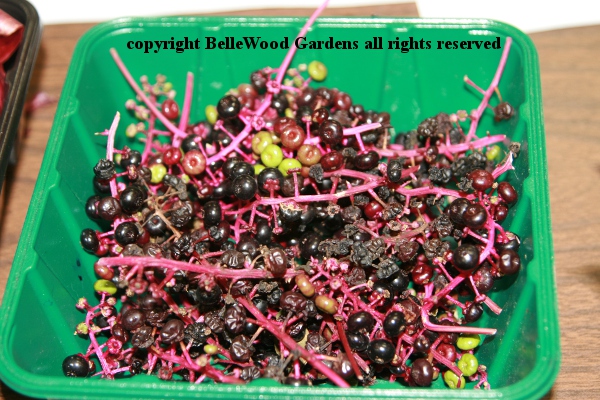
.
If you have any comments, observations, or questions about what you read here, remember you can always Contact Me
All content included on this site such as text, graphics and images is protected by U.S and international copyright law.
The compilation of all content on this site is the exclusive property of the site copyright holder.
Natural Dyeing with Plants
Wednesday, 24 October 2018
Last September I went to a natural dyeing event at The Spinnery, my local yarn shop in Frenchtown, New Jersey. It was a lovely presentation by Betty Oldenburg, the owner. So when the Tohickon garden club was scheduling its programs for 2018, it was one of my suggestions.
We always have a mini-flower show. For the October meeting, in addition to scary critters made from gourds, members were asked to to bring plant material that could be used for dyeing. There were marigolds and goldenrod, barberry roots and avocado pit plus peel, and more.

I brought a container of juicy deep purple pokeberries, and
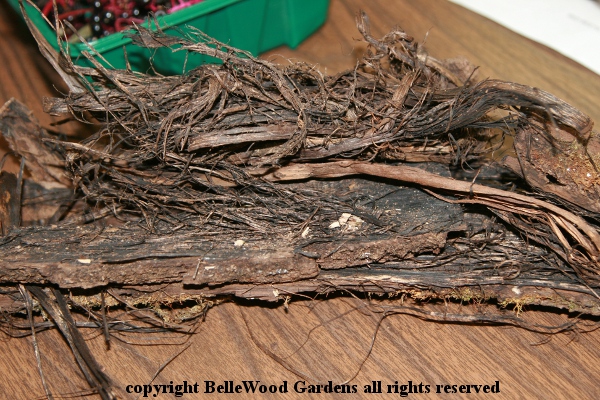
the inner cambium bark from black walnut, Juglans nigra

and the dry papery skins from red onions. Several days ago
I brought pokeberries and black walnut bark to The Spinnery.
Our program meetings are held in the Ottsville, Pennsylvania volunteer fire company's social hall. It's spacious, there's ample parking, and a wall of stoves. It is easy to turn on the propane.
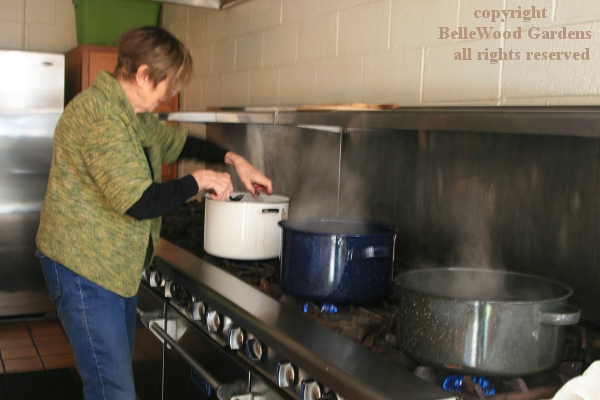
That meant we could offer Betty good facilities to heat the dye pots.
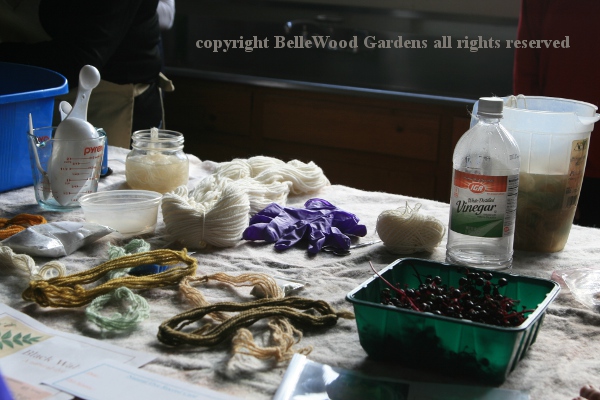
She brought everything you might think of, relating to natural dyeing. Samples of alum, blue vitriol (copper sulphate), copperas (iron sulphate), which are mordants that help bind color to the wool. Alum does not affect the color achieved with natural dyes but blue vitriol and copperas do have an effect on the color. Rubber gloves, or dye your hands along with the yarn. Scoops and spoons, various size containers and measuring cups. Vinegar. Something to protect your work table from splotches and spills.
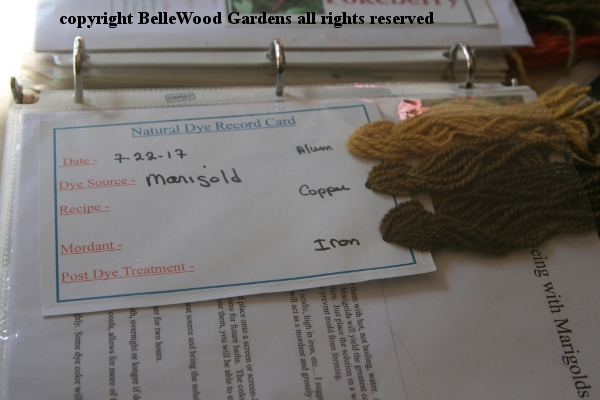
Betty prepared a very good multi-page handout, including a page of
natural dye record cards. Useful should you want to duplicate results.
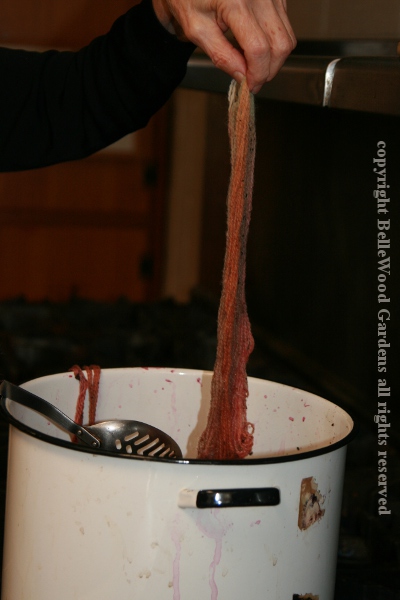
Getting down to it. The pokeberry dye pot, and the yarn. Betty used a mesh sack to hold the pokeberries, to keep bits and pieces off the yarn. Not perfect, but better than not using the bag.

Here's the skein of pokeberry dyed yarn.

From left to right: pokeberry, black walnut bark, and black walnut hulls.
The color variation with each dye plant is the result of mordant influence.

Then, just for fun, Betty told us about solar dyeing. Put the dyestuff - red onion skins, perhaps - in a jar. Cover with water, cap but don't seal, and stand outdoors in the sun. Let it stand several days. Strain the dye bath, but discard the solids. Return dye bath to jar, and add wet, mordanted wool. Back into the sun, and leave for several more days. Now you've naturally dyed some yarn!
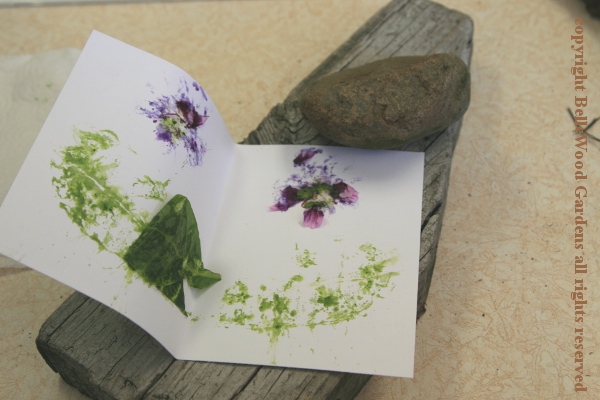
And hammer dyeing - also fun but rather noisy. Place a leaf or two, a flower or two, in a blank, folded over card or piece of fabric. Cover with a paper towel. Then pound away. (I found a piece of board outside the door, and a comfortable-in-my-hand rock.) Good for dealing with any aggressive tendencies, with a charming result.
A good time had by all. And something still plant related yet quite different from gardening.
Back to Top
Back to October 2018
Back to the main Diary Page